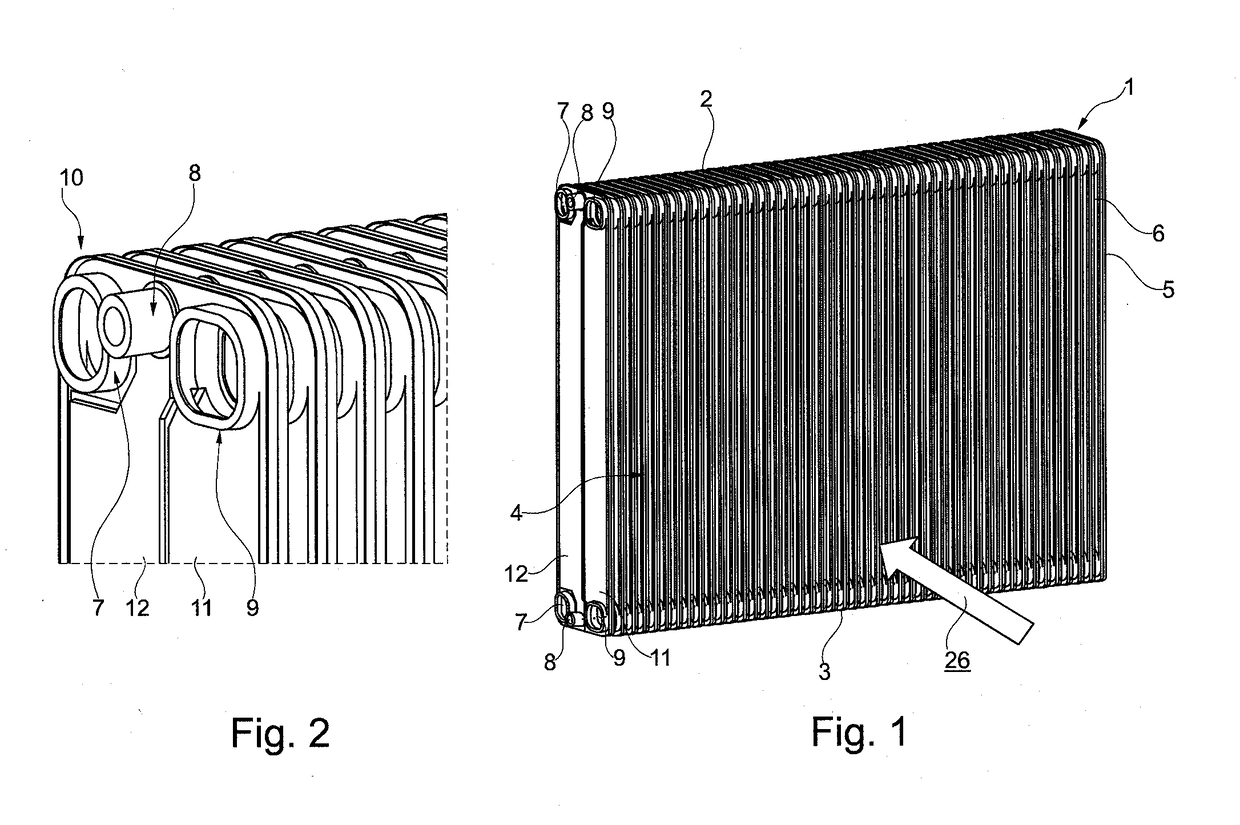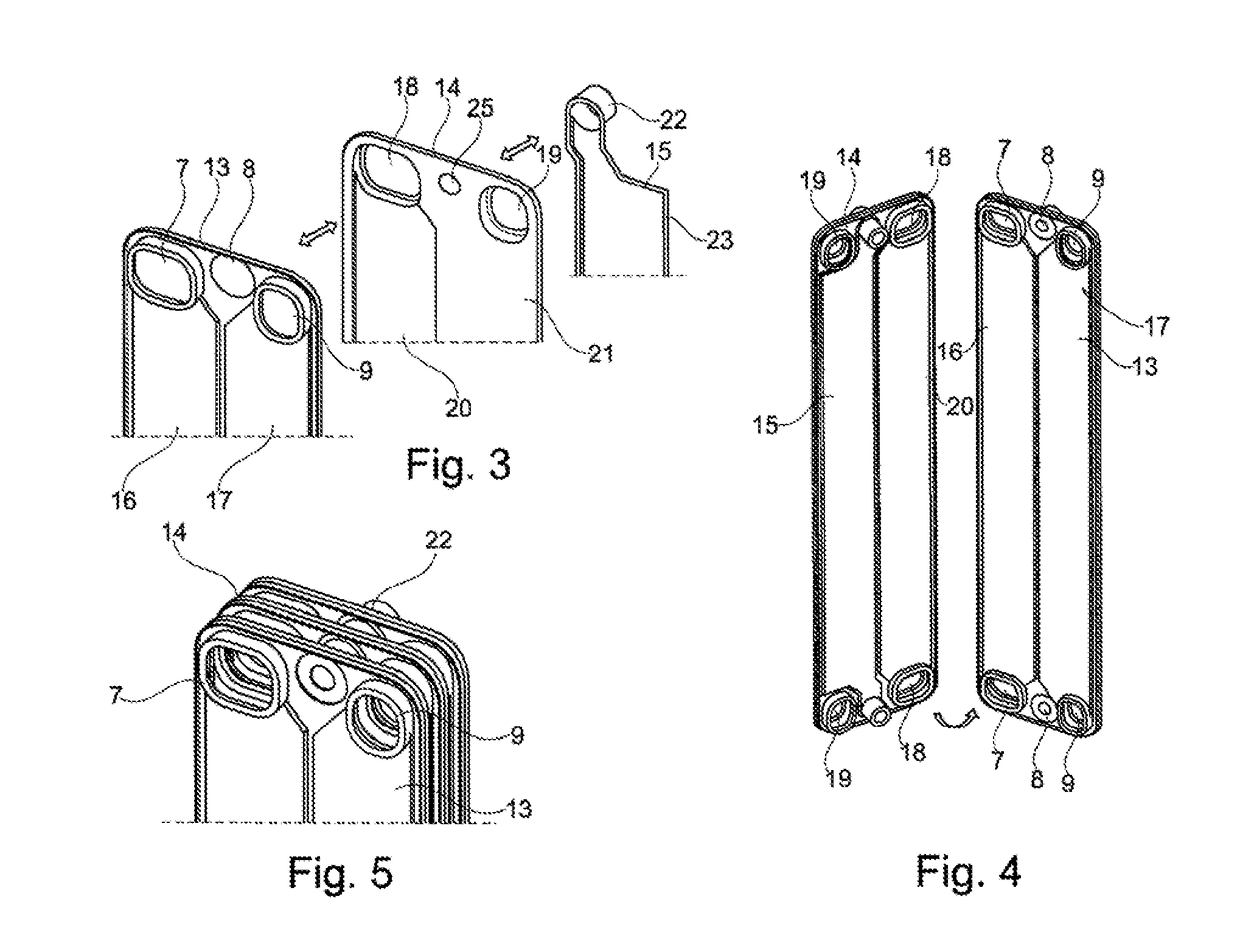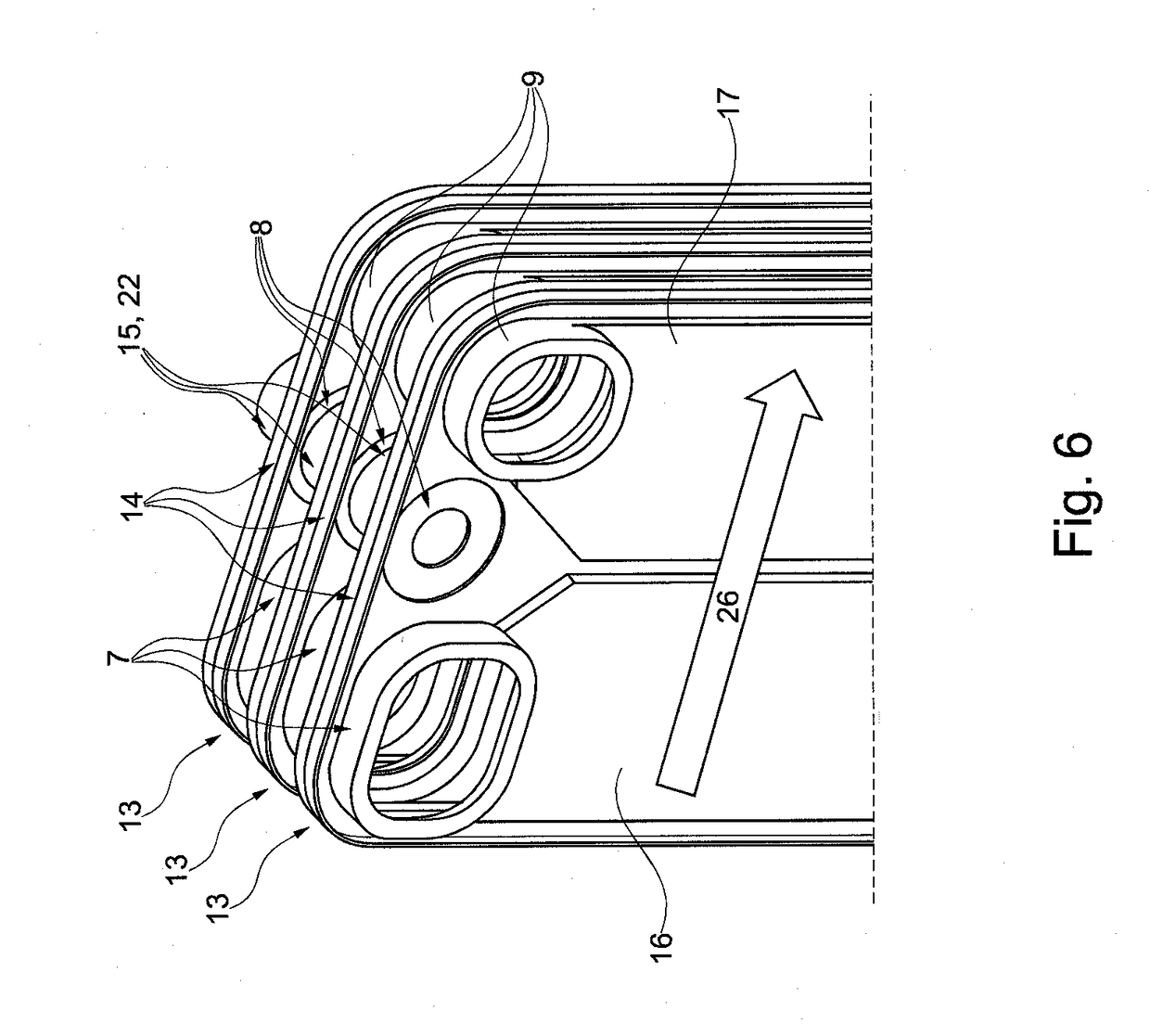Heat exchanger
a heat exchanger and plate type technology, applied in indirect heat exchangers, laminated elements, light and heating apparatus, etc., can solve the problems of affecting the physical comfort of the vehicle passengers, the inability of the air conditioning of the motor vehicle to operate and provide a cooling capacity, and the rise in the interior temperature of the vehicle, so as to reduce the complexity, reduce the cost, and the effect of simple manufacturing
- Summary
- Abstract
- Description
- Claims
- Application Information
AI Technical Summary
Benefits of technology
Problems solved by technology
Method used
Image
Examples
Embodiment Construction
[0041]FIG. 1 shows a heat exchanger 1 with a first top header 2 and a second bottom header 3, which are arranged at two opposite ends of the heat exchanger and extend in a transverse direction, and having a block 4, in which the block network includes plates that are joined together to form plate groups, a plurality of plate groups 5 being arranged next to one another in order to form the heat exchanger network. Spatial regions 6, which are used for the flow of air through the heat exchanger, for example, are provided between two adjacent plate groups 5. The air flow direction is indicated by arrow 26. Fins such as, for example, corrugated fins can also be provided in the indicated spatial regions to improve the heat transfer.
[0042]It is evident that the top and bottom headers have substantially three flow channels, which are indicated by the three connecting pieces 7, 8, 9. These flow channels of the header extend in the transverse direction at the top side and at the bottom side o...
PUM
 Login to View More
Login to View More Abstract
Description
Claims
Application Information
 Login to View More
Login to View More - R&D
- Intellectual Property
- Life Sciences
- Materials
- Tech Scout
- Unparalleled Data Quality
- Higher Quality Content
- 60% Fewer Hallucinations
Browse by: Latest US Patents, China's latest patents, Technical Efficacy Thesaurus, Application Domain, Technology Topic, Popular Technical Reports.
© 2025 PatSnap. All rights reserved.Legal|Privacy policy|Modern Slavery Act Transparency Statement|Sitemap|About US| Contact US: help@patsnap.com



